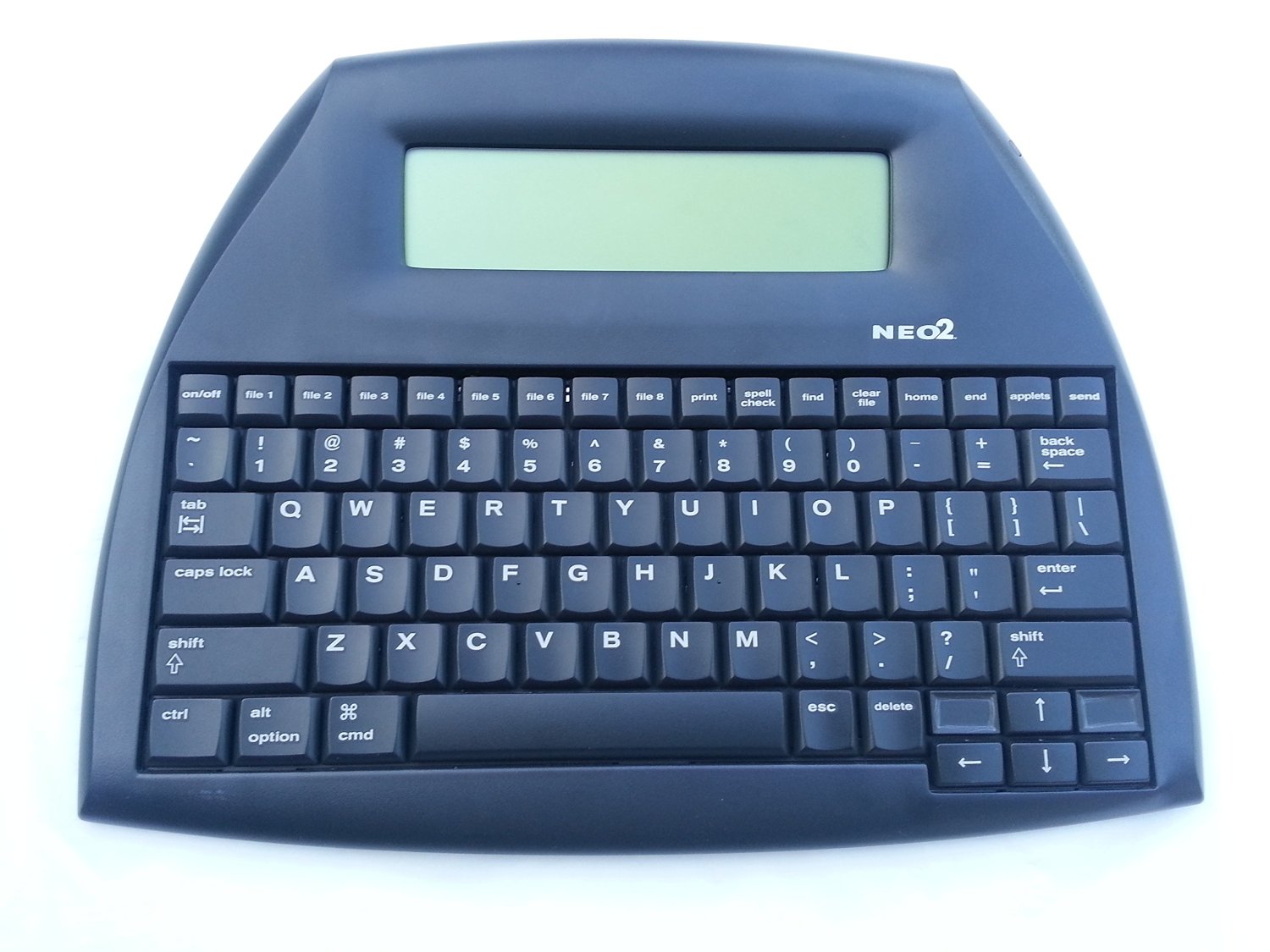I like writing, and I often write at night. However, writing at night on a computer monitor increases exposure to bright light and blue light, which delay sleep onset and suppresses melatonin production, respectively. Even tablets have this drawback, which is why I try to avoid reading on them at night.
Alternatives
I looked for an alternative to writing on a standard computer monitor. I considered finding a Kindle-like screen that has e-ink technology. This seemed technically feasible, but difficult to set up and maintain as well as being expensive.
I briefly considered writing by hand, but this has the disadvantages of being slow and difficult to get into electronic form.
I also took a look at some electronic typewriters (yes, really!) I could type on a familiar keyboard layout and then scan the resulting copies and use OCR on them to get the text extracted to a digital format. This seemed cumbersome and error-prone, and lacked many of the simple editing tools that a modern word-processor would use.
What I really wanted was a few line LCD display. I remembered my parents had a small address book that ran off of a few batteries, and figured maybe I would have to make something like that. In a last ditch effort, I posted to Twitter:
Using computer late is bad for sleep (use f.lux already) but enjoy writing at night. Want e-ink monitor or real ink http://t.co/IbWkJrhRLV
— Anthony Panozzo (@panozzaj) September 10, 2014Kyle replied that his wife had something that might fit the bill, and she responded with some more info:
@kyleashipley @panozzaj Mine’s an Alphasmart Neo–it’s great for writing away from the computer and transferring later. About $30 on eBay.
— Jillian (@JillOnGames) September 10, 2014The Neo

After briefly looking into it, the Alphasmart Neo seemed like it fit the bill. It has been recently discontinued, but there are enough on eBay and Amazon at the moment that you can pick up one for under $40, delivered.
Key benefits include:
- a few lines of text that are readable in low to medium light
- no backlight
- insane battery life (I have typed for many hours as of the time of writing, and it still registers > 95% battery life)
- no-frills word processor for distraction-free writing
- syncs with my computer to get or receive files
- eight text files open at once, with more saved to device
- quick to turn off and on
The Display
One thing that surprised me is that the font is not always monospaced. I was thinking it would always be monospace due to the display, and I typically write in monospace. However, the display itself is a grid of pixels, not a bunch of separated characters.
The font width also depends on which specific font you select. For example, there are monospaced fonts in the system font, but the smallest font has variable width only. There is a system font that has four lines visible but with monospaced, and you can use the variant that has the same height but variable width.
Overall I like a medium font the most. The smallest font was nice for a while, since I could see the most lines of text at once. But it can be hard to see depending on the lighting. I wouldn’t want to do much text editing in this processor. Mostly just for typing first drafts or getting things out of my head. Variable width is nice to get the most characters per line. The Neo reflows text in the paragraph when writing.
Sections
I guess there is support for sections, which is helpful for navigating around the document.
Editing Quirks
There are a couple of things that I would like to change about the AlphaWord applet. First is that the keyboard repeat rate is a bit slow, so trying to hold down the keys takes a long time and then I need to flutter them instead. As a result, navigating is harder than it needs to be.
Another quirk is that there is no easy way to kill backwards multiple characters or words. Typically this would be something like Ctrl-Backspace, Alt-Backspace, or Ctrl-W, depending on the program or platform. Instead, to delete multiple words, you need to select them and then press backspace. Further, after selecting some text, I cannot delete it by starting to type. It just unselects the text and starts writing at the place that the cursor was at.
Transferring data
You can pull files off of the Neo (and put them on, although this is less useful for me at this time.) However, the encoding is a bit messed up (I think it has Windows line endings.) I made a small script to convert the encodings and rename the files into something more command-line friendly. I probably could have done the same with bash and dos2unix or some variant, but it works.
But can it run Vim?
While there are some loadable applications and presumably some way of writing them, there doesn’t seem to be a Vim application. There is a similar-looking device called the QuickPAD PRO (image comparison) that runs various custom applications and has more screen space that might be more promising for something like this. I will probably try to pick one up if the opportunity presents itself.
Recommended
Overall, I recommend getting an AlphaSmart Neo if you do much night writing or want a quality portable writing device.